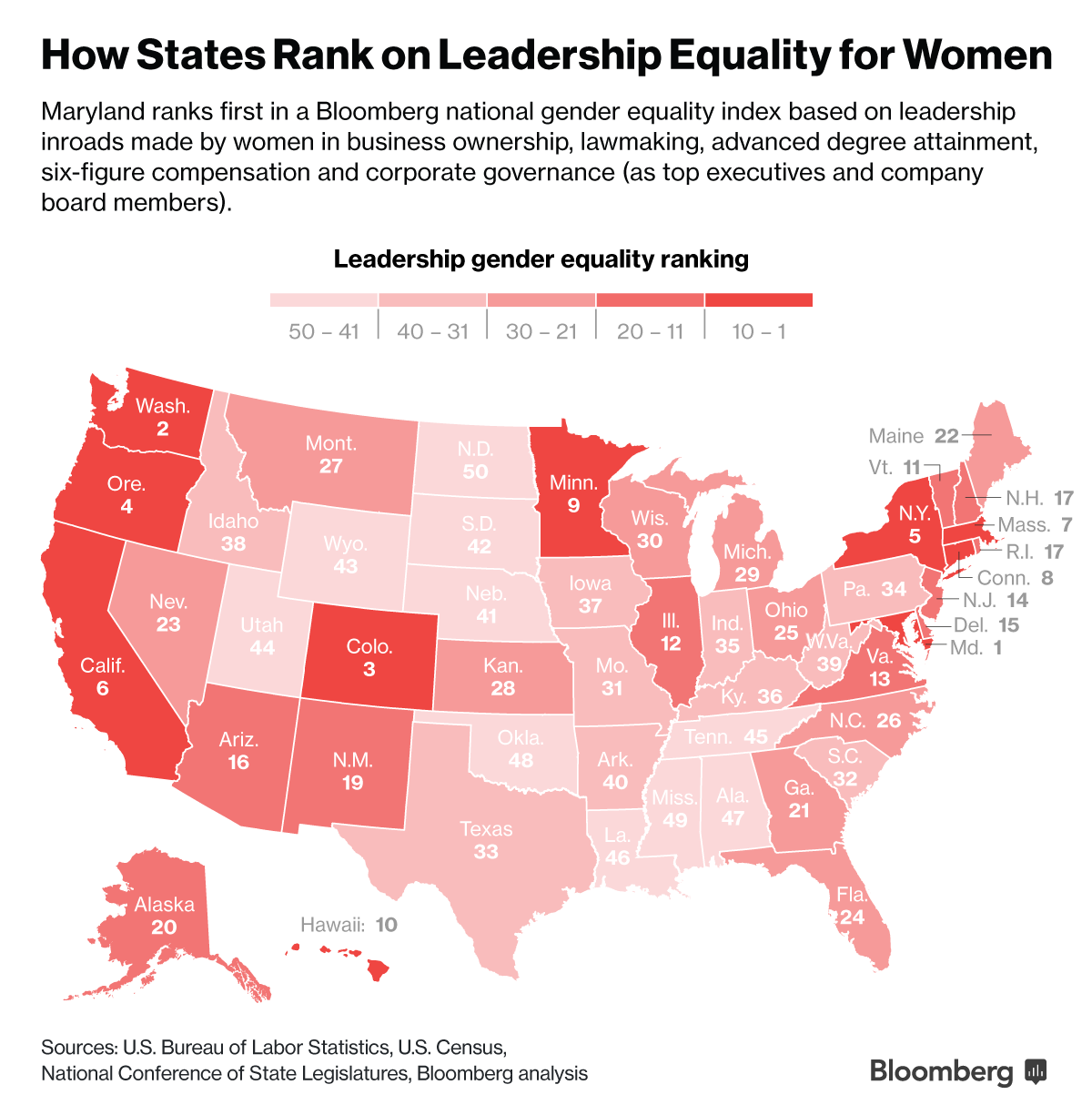Which States Score Highest for Gender Equality? Depends on How You Define It
States that rank well for female leadership and entrepreneurship often rank poorly for things like female labor-force participation and poverty levels, and vice versa.


"Maryland is the most gender-equal state in the U.S.," pronounced Bloomberg News on Tuesday, a day being heralded by the activist-media-politician pipeline as International Women's Day. According to Bloomberg, Vermont, Minnesota, Connecticut, Hawaii, and New Hampshire also score high on gender equality, while "the picture is bleakest" for women in Louisiana, Mississippi, Oklahoma, Alabama, West Virginia, and Arkansas.
How does the publication arrive at these determinations? By creating a gender-equality ranking index based on five things: women's labor-force participation, the breakdown of college degrees, the size of the gender pay gap, health-insurance coverage rates, and comparative poverty levels.
Unsurprisingly considering the criteria, the states that get the best scores on Bloomberg's gender equality index tend to have lower poverty rates overall: New Hampshire ranks lowest in country for poverty, followed by Maryland. And Vermont (10), Minnesota (4), and Hawaii (5) are all within the bottom 10 for overall poverty. Meanwhile, states that fared poorly on the gender-equality index tend to have higher poverty rates. Mississippi barely trails the District of Columbia for poorest place in the country, and Louisiana (3), Alabama (5), Arkansas (7), Oklahoma (8), and West Virginia (9) are all within the top 10 states for poverty.
Are there any conclusions to be drawn here? Just that this may be one way to measure "gender equality," but gender equality is a pretty nebulous concept open to all sorts of interpretation. What if we compared rates of business ownership or leadership positions, or measures of physical or psychological health, or representation in government? There are all sorts of ways to slice equality. And Bloomberg did tackle some of more them in a separate index, which allows for interesting comparisons.
In the second index, Bloomberg looked at "gender equality in leadership, measured by business ownership, lawmaking, advanced-degree holders, high salaries and executive positions in business and government." Maryland also led here, followed by Washington state, Colorado, Oregon, New York, and California. And Southern states tended to fare poorly again, with Mississippi, Alabama, Arkansas, Louisiana, and Tennessee rated worst on the leadership index.
But some states that score high on the first index don't score well on the second index at all, or vice versa. For instance, Washington state ranked second best for gender parity on the index measuring things like business ownership, advanced-degree holders, and executive jobs, but was only middling on the first index, looking at things like poverty rates, health-insurance coverage, and overall labor-force participation. The same can be seen with West-Coast neighbors Oregon, California, and to a lesser degree with nearby Nevada and Arizona.
The reverse is true in the Plains States: Nebraska, South Dakota, and North Dakota all score relatively well on the first index but are among the worst on the women's leadership and entrepreneurship index. And a similar if less severe dynamic exists for Iowa.
Mid-Atlantic and Midwestern states tended to fluctuate within the parameters of the middle of both indexes, while New England states hovered near the top ratings for both.




Show Comments (166)